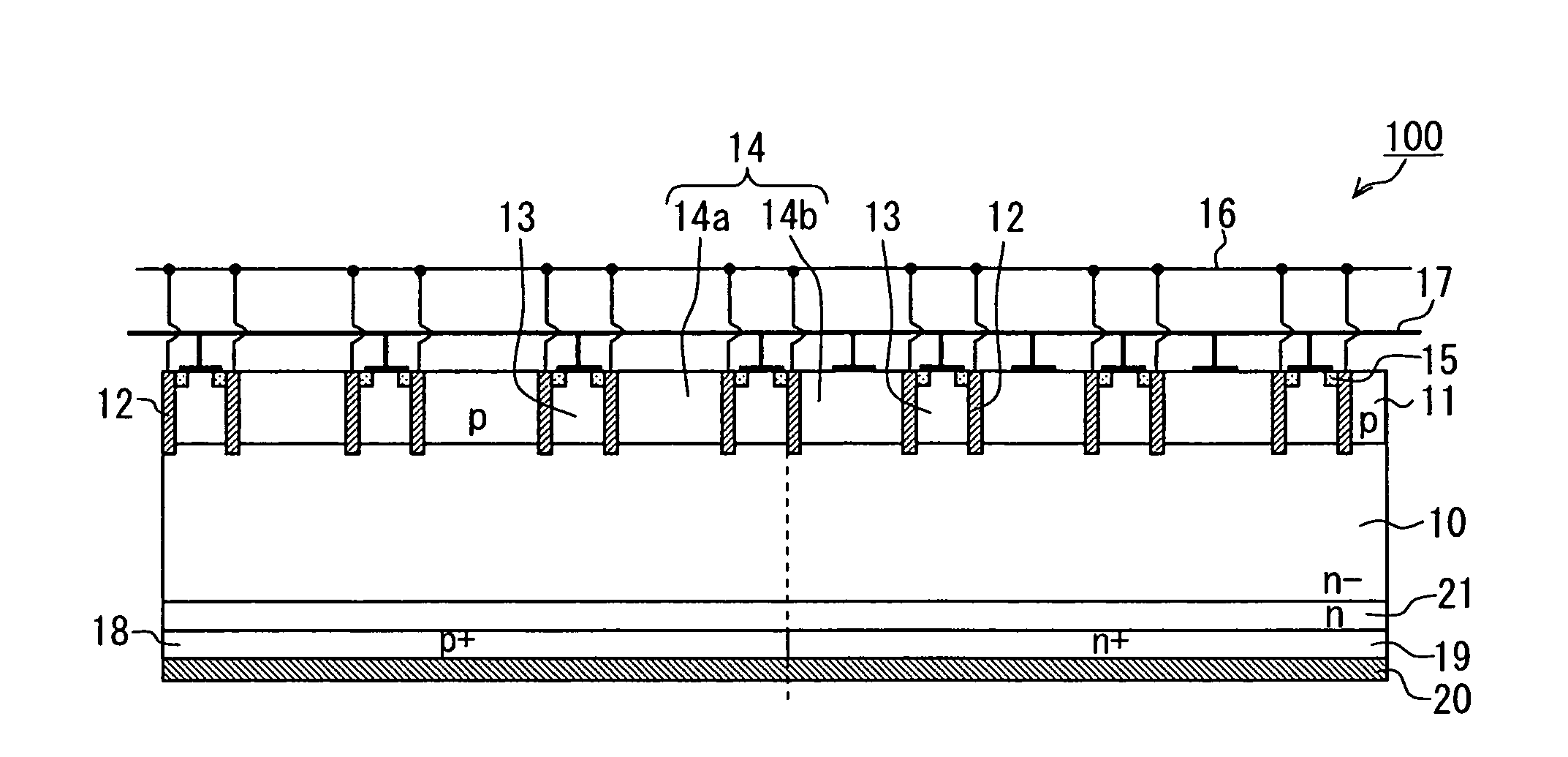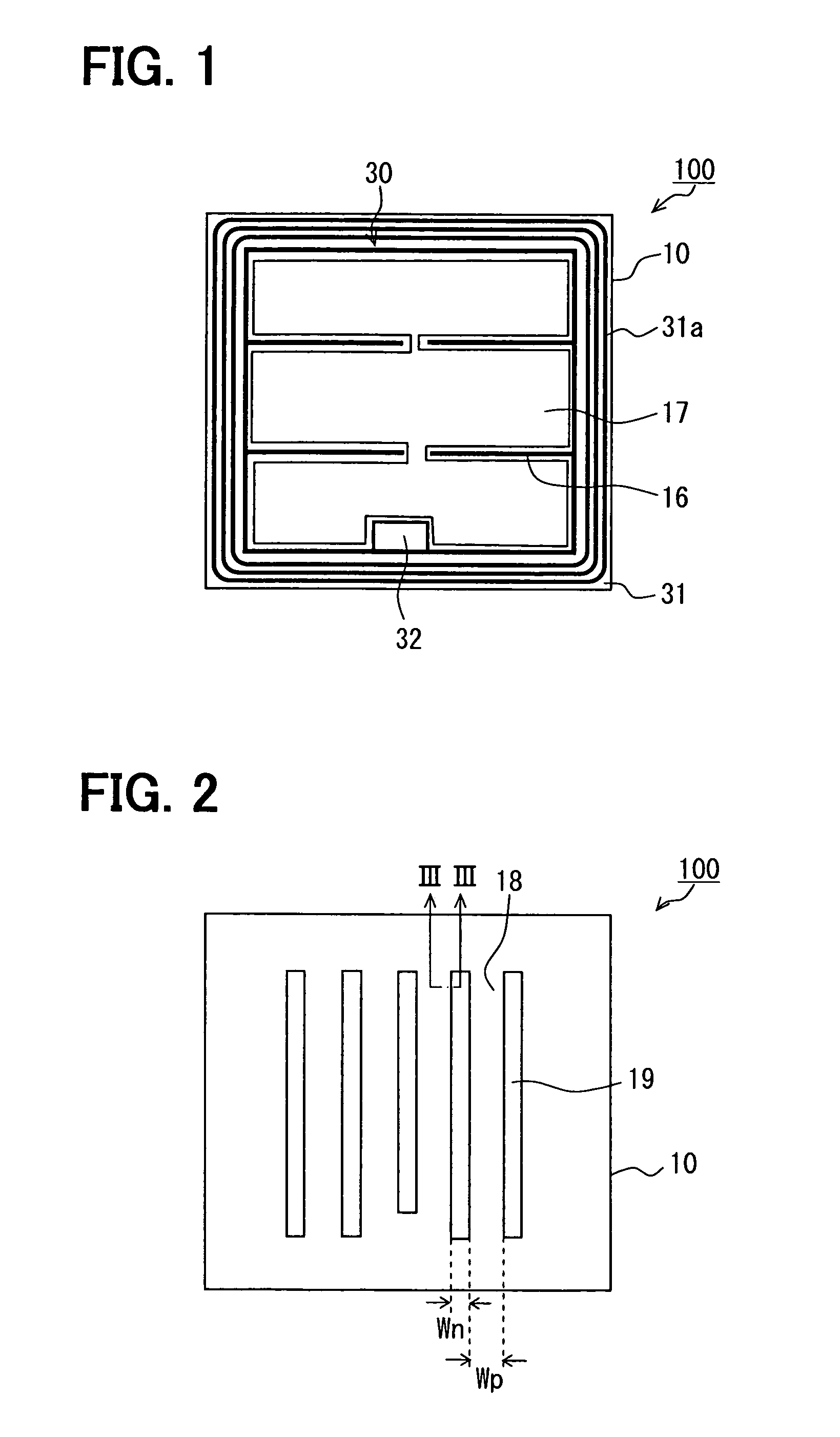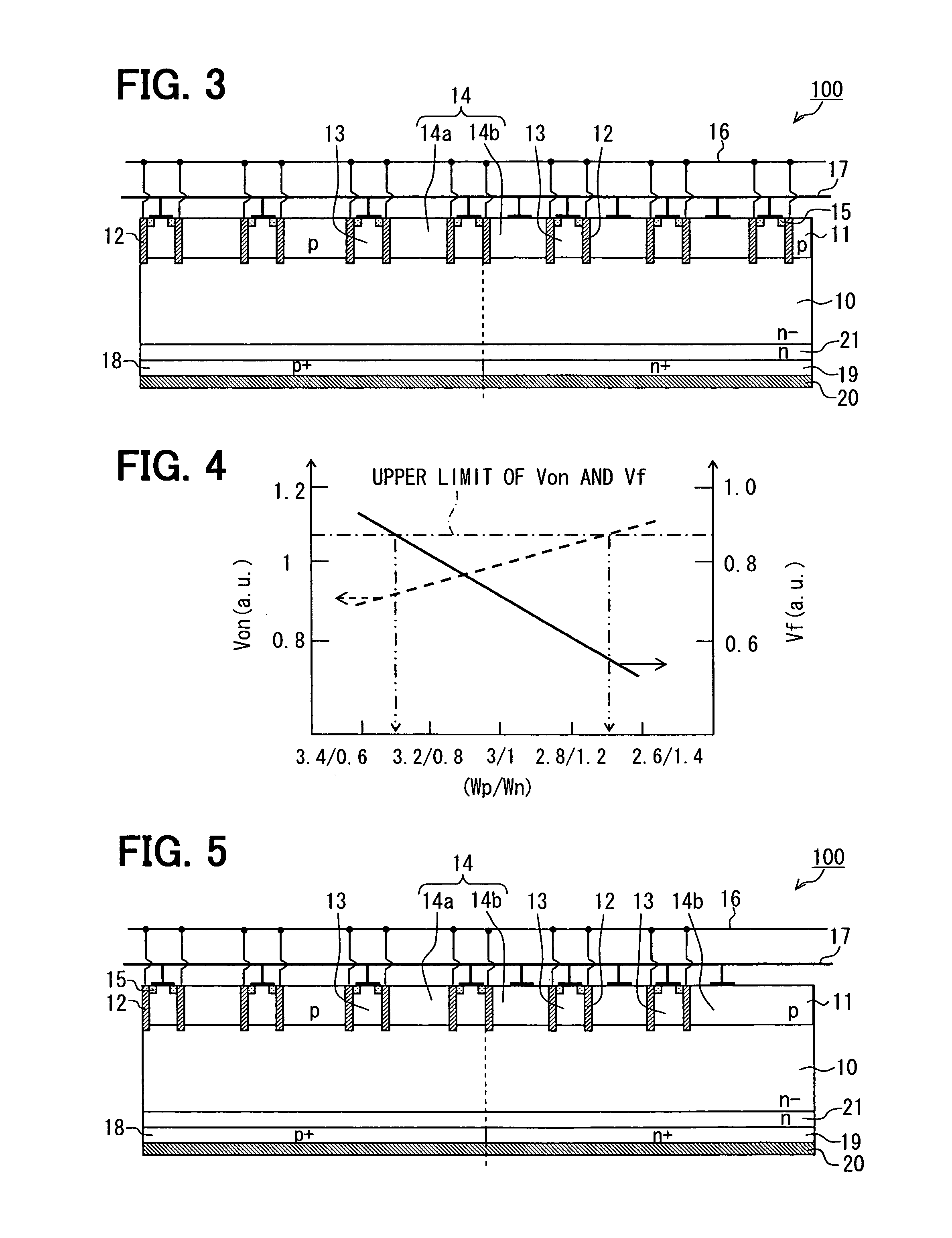Semiconductor device having IGBT and FWD on same substrate
a technology of igbt and fwd, which is applied in the direction of semiconductor devices, basic electric elements, electrical appliances, etc., can solve the problems of large area for functioning anodes, and achieve the effect of reducing the on-state voltage of igbt and the forward voltage of fwd
- Summary
- Abstract
- Description
- Claims
- Application Information
AI Technical Summary
Benefits of technology
Problems solved by technology
Method used
Image
Examples
first embodiment
[0046]FIGS. 1-3 show a semiconductor device according to a first embodiment. In FIG. 2, a collector electrode of the device is not shown.
[0047]The semiconductor device is suitably used for a power switching device in an inverter module of an EHV (electric and hybrid vehicle). Here, a thickness direction of a semiconductor substrate is perpendicular to the substrate, and one direction perpendicular to the thickness direction is defined as a parallel direction of the substrate. The parallel direction is in parallel to a direction of arrangement of a collector region and a cathode region. A N conductive type is, for example, a first conductive type, and a P conductive type is a second conductive type. Alternatively, the first conductive type may be the P conductive type, and the second conductive type may be the N conductive type.
[0048]The device 100 in FIGS. 1-3 includes a semiconductor substrate 10 having the first conductive type. The substrate 10 includes a region 30, in which an I...
second embodiment
[0071]FIG. 5 shows a semiconductor device 100 according to a second embodiment.
[0072]In FIG. 3, the first region 13 having the emitter region 15 in the surface portion of the first region 13 is arranged directly over the collector region 18 and the cathode region 19. The forming area of the first region 13 is not specified. For example, multiple first regions 13 are repeatedly arranged at predetermined intervals along with the parallel direction.
[0073]In FIG. 5, the gate electrode 12 and the first region 13 are formed in a part of the base layer 11 directly over the cathode region 19. Specifically, they are formed from a boundary between the cathode region 19 and the collector region 18 to a predetermined range of the cathode region 19. The cathode side second region 14b is formed in the other part of the base layer 11 over the cathode region 19. The device in FIG. 5 is formed as follows. Specifically, in FIG. 3, one of three first regions 13 over the cathode region 19 is removed. T...
third embodiment
[0078]FIG. 6 shows a semiconductor device according to a third embodiment.
[0079]The gate electrode 12 and the first region 13 are formed only in a part of the base layer 11 disposed directly over the cathode region 19. The part of the base layer 11 is disposed in a predetermined range from an interface between the cathode region 19 and the collector region 18. The interface is defined as a broken line in FIG. 6. The part of the base layer 11 is defined as an adjacent region of the collector region 18. Multiple dummy gate electrodes 22 are formed in the other part of the base layer 11 over the cathode region 19. The dummy gate electrode 22 has the same potential as the gate electrode 12, and is made of the same material as the gate electrode 12. Further, the dummy gate electrode 22 has the same structure as the gate electrode 12. The cathode side second region 14b is formed in a region sandwiched between a pair of dummy gate electrodes 22. The second region 14b sandwiched between a p...
PUM
 Login to View More
Login to View More Abstract
Description
Claims
Application Information
 Login to View More
Login to View More - R&D
- Intellectual Property
- Life Sciences
- Materials
- Tech Scout
- Unparalleled Data Quality
- Higher Quality Content
- 60% Fewer Hallucinations
Browse by: Latest US Patents, China's latest patents, Technical Efficacy Thesaurus, Application Domain, Technology Topic, Popular Technical Reports.
© 2025 PatSnap. All rights reserved.Legal|Privacy policy|Modern Slavery Act Transparency Statement|Sitemap|About US| Contact US: help@patsnap.com



